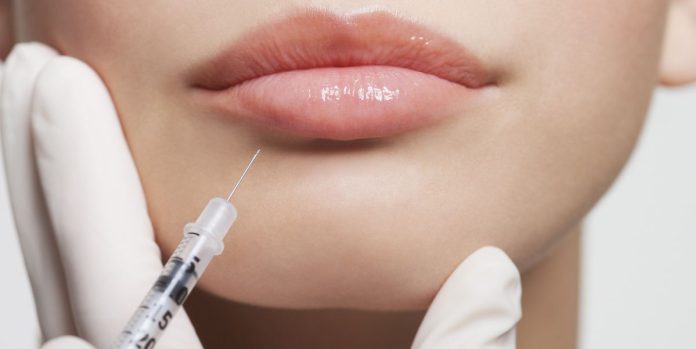Lip fillers have become increasingly popular in recent years as a way to enhance the appearance of the lips and improve the overall balance of facial features. If you’re considering getting lip fillers, it’s important to thoroughly educate yourself on the procedure and understand what to expect before, during, and after the treatment.
In this ultimate guide to lip fillers, we’ll cover everything you need to know before getting injections, including the different types of fillers available, the potential risks and side effects, and how to find a qualified provider.
Table of Contents
What are Lip Fillers?
Lip fillers, also known as dermal fillers or lip injections, are a type of non-surgical cosmetic treatment used to add volume, shape, and definition to the lips. There are several different types of fillers available, including hyaluronic acid fillers, calcium hydroxylapatite fillers, and poly-L-lactic acid fillers.
Hyaluronic acid fillers are the most commonly used type of lip filler. They are made from a substance that occurs naturally in the body, which helps to reduce the risk of allergic reactions. Hyaluronic acid fillers can be dissolved with an enzyme called hyaluronidase, which makes them a reversible option for those who want to try out the treatment without committing long-term.
Calcium hydroxylapatite fillers are made from a synthetic form of the mineral calcium, which is found naturally in the body. These fillers are often used to add volume to the lips and are considered to be longer-lasting than hyaluronic acid fillers. However, they cannot be dissolved with an enzyme, which means they are a more permanent option.
Poly-L-lactic acid fillers are made from a biocompatible, synthetic polymer that is commonly used in medical and cosmetic procedures. These fillers are typically used to add volume and definition to the lips, and they can also stimulate collagen production, which can help to improve the overall appearance of the skin.
What to Expect Before, During, and After Lip Filler Treatment
Before getting lip fillers, it’s important to consult with a qualified provider to determine the best treatment plan for your individual needs and goals. During the consultation, your provider will examine your lips and facial features, discuss your desired results, and explain the procedure in detail.
It’s also important to disclose any allergies or medical conditions you have, as well as any medications you are taking, as this may affect your eligibility for treatment. Your provider may also recommend that you stop taking certain medications, such as blood thinners, before the procedure to reduce the risk of bleeding and bruising.
On the day of the treatment, your provider will clean your lips and apply a local anesthetic to numb the area. The filler will then be injected into the lips using a fine needle or cannula. The procedure typically takes 30 minutes to an hour, depending on the amount of filler being used.
After the treatment, you may experience some swelling, redness, and bruising, which should subside within a few days. Your provider will give you instructions on how to care for your lips after the procedure, including any activity restrictions or aftercare instructions.
It’s important to follow these instructions carefully to ensure the best possible results and to minimize the risk of complications. Most people are able to return to their normal activities immediately after the treatment, although it’s recommended to avoid strenuous exercise and hot showers for the first 24 hours.
Risks and Side Effects of Lip Fillers
As with any medical procedure, there are potential risks and side effects associated with lip fillers. Some of the most common side effects include swelling, redness, bruising, and pain at the injection site. These side effects are usually temporary and resolve within a few days.
More serious complications, such as infection, allergic reactions, and uneven results, are rare but can occur. It’s important to choose a qualified provider who has experience administering lip fillers to minimize the risk of these complications.
It’s also important to keep in mind that lip fillers are not permanent, and the results typically last for six months to a year before they need to be retreated. Over time, the body will naturally absorb the filler, and the lips will return to their original shape.
Choosing a Qualified Provider for Lip Fillers
It’s important to choose a qualified provider when getting lip fillers to ensure the best possible results and minimize the risk of complications. Look for a provider who is experienced in administering lip fillers and has a good track record of satisfied patients.
You can also check with professional organizations, such as the American Society of Plastic Surgeons or the American Society for Aesthetic Plastic Surgery, to find a qualified provider in your area.
Before getting lip fillers, be sure to ask your provider about their qualifications, experience, and any potential risks or side effects associated with the treatment. It’s also a good idea to ask to see before and after photos of their work to get an idea of the results you can expect.
In conclusion, lip fillers can be a safe and effective way to enhance the appearance of the lips and improve the overall balance of facial features. It’s important to thoroughly educate yourself on the procedure and choose a qualified provider to minimize the risk of complications and achieve the best possible results.
















